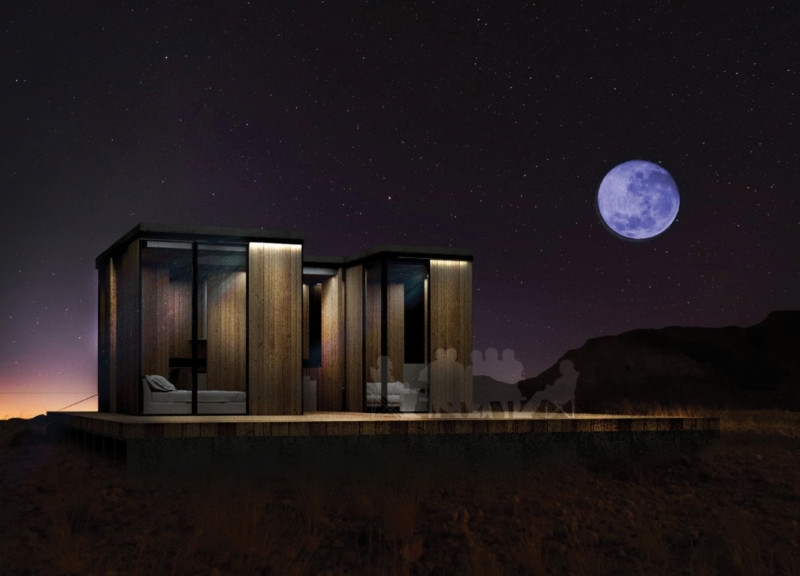5 key facts about this project
The design project 5² is located in a contemporary context that explores the concept of compact living. This dwelling uses a thoughtful arrangement of prefabricated wooden cubes to create spaces that serve the needs of two people. The overall idea focuses on balancing privacy with shared living, allowing residents to adjust and change their environment based on personal or seasonal needs.
Sustainability Features
5² incorporates several sustainable elements that lower its environmental impact. Solar panels are placed on both mobile cubes, providing renewable energy for heating. This helps to reduce dependence on traditional energy sources. Below the wooden deck, a battery stores energy for later use, ensuring continuous access to power. Additionally, a rainwater collection system is integrated into the roof design, enabling the reuse of water for household tasks. This approach emphasizes efficient resource management.
Spatial Dynamics
Flexibility is a key component in the design of 5². The movable wooden cubes allow for various layout configurations, enabling occupants to reshape their living space to suit different seasons or personal preferences. During warmer months, the arrangement can be more open to enhance airflow, while in winter, a more compact form can help retain heat. This adaptability creates a comfortable living environment and promotes energy efficiency year-round.
Material Application
The choice of materials plays an important role in the overall design. Prefabricated wooden cubes make up the main structure, while large glazed surfaces bring light into the interior. These windows connect the inside spaces with the outdoor setting, fostering a sense of openness. The use of these materials supports both aesthetic qualities and functional needs inherent in a compact living space.
Movable wooden volumes glide along built-in sliding rails, creating a U-shaped pathway around the fixed core of the design. This allows residents to engage in the arrangement of their environment, actively shaping their experience.



















































